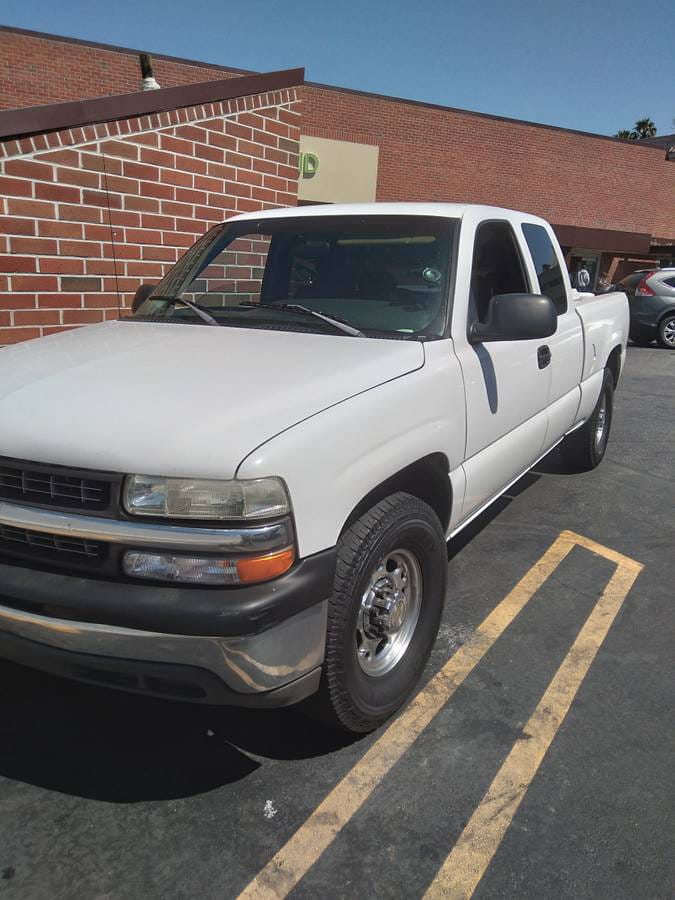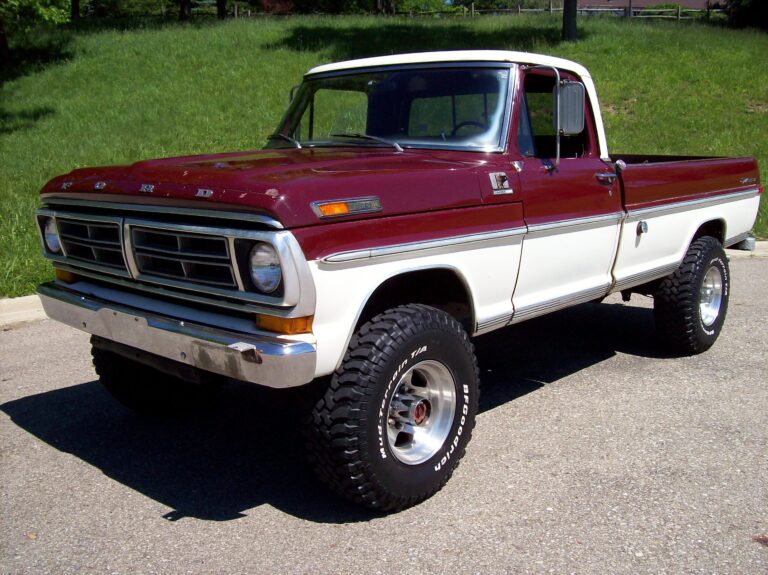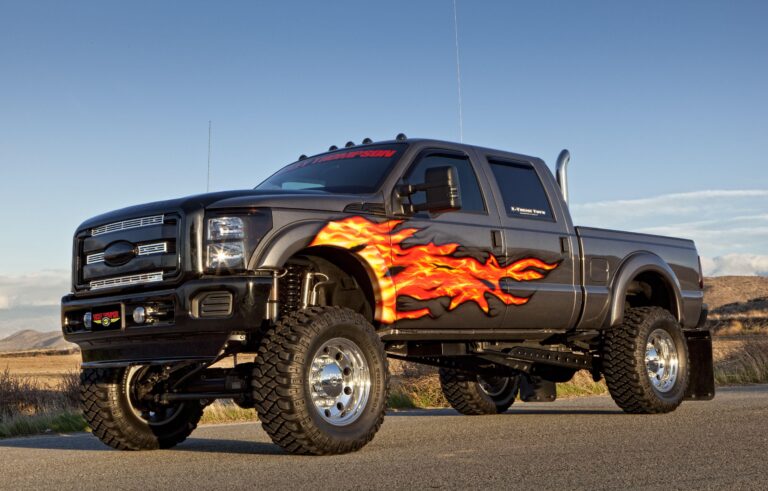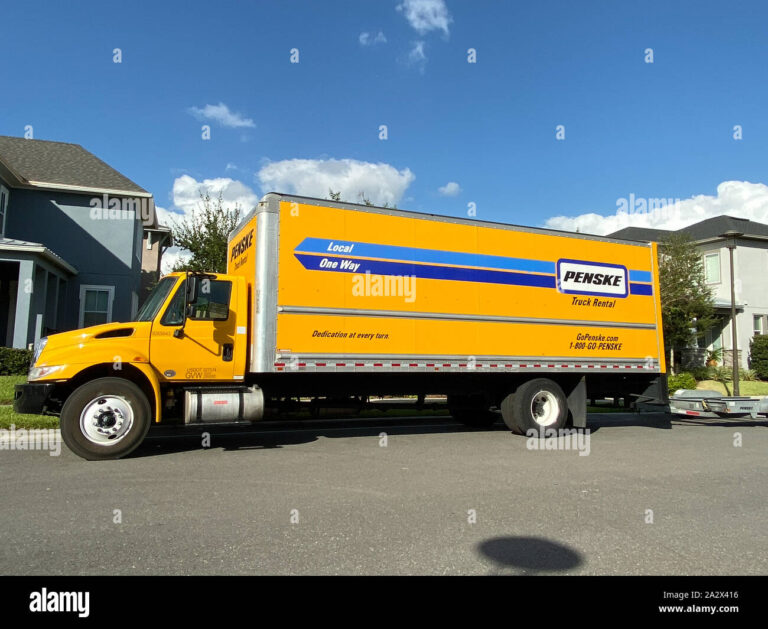What Year Chevy Truck Shells Fit Truck: A Comprehensive Guide to Interchangeability
What Year Chevy Truck Shells Fit Truck: A Comprehensive Guide to Interchangeability cars.truckstrend.com
The world of truck customization, restoration, and repair often leads enthusiasts down a rabbit hole of compatibility questions. One of the most frequently asked, and often complex, is: "What year Chevy truck shells fit truck?" This seemingly simple query unravels into a fascinating exploration of automotive design evolution, engineering commonalities, and the nuances of truck bed interchangeability. Whether you’re looking to replace a rusted bed, upgrade to a different style, or simply curious about the possibilities, understanding which Chevy truck beds (often referred to as "shells" or "boxes") and even camper shells are compatible across different model years is crucial for a successful project.
This guide aims to demystify the topic, providing a structured overview of Chevy truck bed fitment, highlighting key considerations, and offering practical advice for navigating the often-tricky waters of truck part compatibility.
What Year Chevy Truck Shells Fit Truck: A Comprehensive Guide to Interchangeability
The Basics of Truck Bed Fitment: More Than Just Bolting On
Before diving into specific generations, it’s essential to understand the fundamental factors that dictate whether a truck bed from one Chevy model year will fit another:
- Bed Length: This is the primary determinant. Chevy trucks come in various standard bed lengths (e.g., 5.8-foot short bed, 6.5-foot standard bed, 8-foot long bed). A bed must match the intended frame’s length.
- Cab Configuration: The type of cab (Regular Cab, Extended Cab, Crew Cab) dictates the frame length behind the cab, which in turn determines the appropriate bed length. For instance, a regular cab long bed might use the same 8-foot bed as a crew cab long bed, but the frame ahead of the bed would be different.
- Frame Width and Mounting Points: While somewhat consistent within major generational shifts, frame widths and the location of mounting bolt holes can vary. Even a slight difference can make a direct bolt-on impossible without modification.
- Body Lines and Aesthetics: Even if a bed physically bolts onto a frame, it might not perfectly align with the cab’s body lines, wheel wells, or the overall aesthetic of the truck, leading to an "off" look.
- Fuel Filler Location: The position of the fuel filler neck and door on the bed side must align with the truck’s fuel tank and filler hose. This is a common point of incompatibility.
- Taillight Design and Wiring: Taillight assemblies are often integrated into the bed and vary significantly between generations. Wiring harnesses for taillights, turn signals, and license plate lights also differ.

Understanding these factors is the first step toward a successful bed swap.

Generational Breakdown: Chevy Truck Bed Compatibility
Chevy trucks have undergone several significant redesigns over the decades, creating distinct "generations." Generally, beds are most interchangeable within a specific generation, with limited or no direct compatibility across generations without substantial modification.
1. Pre-1973 Chevrolet C/K Series (1st & 2nd Generation)
- 1960-1966 (C10/C20/C30, etc.): These trucks introduced independent front suspension and a new body style. Bed designs often featured unique "Fleetside" (smooth side) and "Stepside" (fendered side) options. While beds might share some common dimensions, direct interchangeability across this small window can be tricky due to subtle body line changes year-to-year and mounting differences.
- 1967-1972 (C10/K10, etc. "Action Line"): Highly popular, these trucks are known for their classic lines. Fleetside and Stepside beds within this generation are generally interchangeable among themselves, provided the bed length (short vs. long) matches. Frame widths are consistent. However, fitting these beds onto anything outside this generation would require extensive custom fabrication.

2. 1973-1987 (Square Body C/K Series – "Rounded Line")
- Compatibility within Generation: This is arguably one of the most interchangeable generations. Most Fleetside beds (short box, long box) from 1973 to 1987 are directly interchangeable. This includes both 2WD (C-series) and 4WD (K-series) trucks, as the frame dimensions relevant to bed mounting remained largely consistent.
- Key Considerations:
- Fuel Filler: Early Square Bodies (73-77) had the fuel tank inside the cab, with the filler neck behind the seat. Later models (78-87/91 for Blazers/Suburbans) moved the tank to the frame, with the filler on the bedside. Swapping a later bed onto an earlier truck would mean either relocating the filler or modifying the bed.
- Taillights: While similar, slight variations exist, but wiring can usually be adapted.
- Body Lines: Generally consistent across the years within this generation.
- Note: While the ’88 R/V series (older body style sold alongside the new GMT400) exists, their beds are still Square Body compatible.
3. 1988-1998 (GMT400 Series – C/K 1500/2500/3500)
- Compatibility within Generation: Beds from 1988 to 1998 (and early ’99 "Classic" models) are highly interchangeable within their respective lengths (short bed, long bed). This applies to Silverado and Sierra models.
- Key Considerations:
- Fuel Filler: Generally consistent placement on the bedside.
- Taillights: Taillights are interchangeable within this generation.
- Body Lines: Very consistent, ensuring a clean fit.
- Note: This generation introduced various cab styles (Regular, Extended, Crew Cab), all using specific bed lengths that are compatible with other trucks of the same cab/bed configuration within the GMT400 platform.
4. 1999-2006 (GMT800 Series – Silverado/Sierra 1500/2500/3500)
- Compatibility within Generation: Beds from 1999 to 2006 are largely interchangeable. This includes the ’07 "Classic" models that carried over the GMT800 platform. Short beds fit short bed trucks, long beds fit long bed trucks, etc.
- Key Considerations:
- Fuel Filler: Consistent.
- Taillights: Interchangeable.
- Body Lines: Consistent.
- Note: This generation also saw the introduction of the Avalanche (midgate design, not a traditional bed) and the SSR (unique roadster bed), which are not interchangeable with standard truck beds.
5. 2007-2013 (GMT900 Series – Silverado/Sierra 1500/2500/3500)
- Compatibility within Generation: Beds from 2007 to 2013 are generally interchangeable within their respective bed lengths.
- Key Considerations:
- Fuel Filler: Consistent.
- Taillights: Interchangeable.
- Body Lines: Consistent.
- Note: The GMT900 introduced more sculpted body lines, making cross-generational swaps aesthetically challenging even if mounting could be adapted.
6. 2014-2018 (K2XX Series – Silverado/Sierra 1500/2500/3500)
- Compatibility within Generation: Beds from 2014 to 2018 are highly interchangeable within their specific bed lengths.
- Key Considerations:
- Fuel Filler: Consistent.
- Taillights: Interchangeable.
- Body Lines: Consistent.
7. 2019-Present (T1XX Series – Silverado/Sierra 1500/2500/3500)
- Compatibility within Generation: Beds from 2019 onwards are interchangeable within their specific bed lengths. These feature new design elements like the "Durabed" on certain models.
- Key Considerations:
- Fuel Filler: Consistent.
- Taillights: Interchangeable.
- Body Lines: Consistent.
Important General Rule: While beds generally fit within their own generation, attempting to fit a bed from an entirely different generation usually requires significant custom fabrication, frame modification, and bodywork to achieve a proper fit and finish. This is typically reserved for advanced custom builds rather than direct swaps.
Camper Shell Fitment: A Simpler Approach
Unlike truck beds, camper shells (also known as truck caps or toppers) are primarily designed to fit the dimensions of the truck bed opening, rather than specific frame or mounting points.
-
Key Factors for Camper Shells:
- Bed Length: The camper shell must match the truck bed’s length (e.g., 5.8 ft, 6.5 ft, 8 ft).
- Bed Width: While relatively standard for full-size trucks, slight variations exist, especially between older and newer models.
- Cab Height: For certain designs (e.g., walk-in shells), the height of the camper shell might need to clear the truck’s cab roofline.
- Tailgate Clearance: Some shells are designed to sit flush with the top of the tailgate, while others might overhang slightly.
-
Interchangeability: A camper shell designed for a 6.5-foot bed on a 2005 Silverado will very likely fit a 6.5-foot bed on a 2010 Silverado, or even a 2015 Silverado, as long as the bed dimensions are consistent. Minor adjustments to the clamping system might be needed. The primary challenge comes when swapping between different makes of trucks (e.g., Chevy to Ford) or drastically different model years where bed dimensions may have changed more significantly.
Tips for Successful Shell Swaps
- Measure, Measure, Measure: Before purchasing any bed or shell, meticulously measure your existing bed’s length, width, and the distance between mounting holes on the frame. Compare these measurements to the donor bed.
- Inspect for Damage: Used beds can hide rust, dents, or frame damage. Inspect thoroughly, especially the underside and mounting areas.
- Consider Body Lines: Even if it bolts up, will it look right? Pay attention to how the body lines of the donor bed will align with your cab.
- Wiring Harnesses: Be prepared to splice, extend, or adapt wiring for taillights, license plate lights, and potentially fuel filler sensors.
- Fuel Filler Neck: This is often the trickiest part. Ensure the donor bed’s fuel filler opening aligns with your truck’s fuel tank. Custom filler necks might be required.
- Seek Professional Advice: If you’re unsure, consult with a body shop or a custom fabrication shop. They can offer insights into the feasibility and cost of modifications.
Challenges and Solutions
- Rust: Common in older beds. Solution: Rust repair, new sheet metal, or finding a rust-free donor.
- Misaligned Mounting Holes: Solution: Re-drilling new holes (if safe and structurally sound), using adapter plates, or custom fabrication.
- Electrical Differences: Solution: Wiring diagrams, test lights, soldering, and proper insulation.
- Aesthetic Mismatches: Solution: Custom bodywork, paint matching, or embracing a "franken-truck" look.
- Fuel Filler Issues: Solution: Custom filler neck fabrication, relocating the filler, or modifying the bed panel.
General Compatibility and Estimated Used Bed Price Ranges by Generation
Please note: Prices are highly variable based on condition, location, demand, and rarity. These are general estimates for used beds in decent, but not perfect, condition.
| Chevy Truck Generation | Model Years | Primary Bed Compatibility | Est. Used Bed Price Range (USD) | Key Considerations for Swap |
|---|---|---|---|---|
| 2nd Gen C/K | 1967-1972 | Within 1967-1972 | $1,000 – $4,000+ | Excellent for resto-mods, high demand. |
| Square Body C/K | 1973-1987 | Within 1973-1987 | $800 – $2,500 | Fuel filler location (pre-78 vs. post-78). |
| GMT400 C/K | 1988-1998 | Within 1988-1998 | $600 – $2,000 | Minor variations in later models. |
| GMT800 Silverado | 1999-2006 | Within 1999-2006 | $500 – $1,800 | Common and relatively easy swaps. |
| GMT900 Silverado | 2007-2013 | Within 2007-2013 | $700 – $2,200 | Increased complexity in wiring if not direct. |
| K2XX Silverado | 2014-2018 | Within 2014-2018 | $1,000 – $3,000 | Modern features might require more precise fit. |
| T1XX Silverado | 2019-Present | Within 2019-Present | $1,500 – $4,500+ | Newer, higher demand, less available used. |
Frequently Asked Questions (FAQ)
Q1: Can I put a long bed on a short bed truck?
A1: Not without major frame modification. The frame rails for a long bed truck are significantly longer behind the cab than those for a short bed truck. This is a complex and expensive structural modification.
Q2: Will a bed from a GMC Sierra fit a Chevrolet Silverado of the same year?
A2: Yes, almost always. GMC Sierra and Chevrolet Silverado trucks are essentially badge-engineered twins within the same generation. Their beds are identical in dimensions and mounting points.
Q3: How do I tell if a bed is a short bed or a long bed?
A3: Measure the inside length of the bed from the bulkhead (front) to the inside of the tailgate (rear). Common lengths are typically around 5.8 feet (short), 6.5 feet (standard/regular), and 8 feet (long).
Q4: Is it worth it to swap a truck bed, or should I just repair mine?
A4: It depends on the extent of the damage and your budget. If your bed has minor dents or surface rust, repair is often more cost-effective. If it’s severely rusted, bent, or has structural damage, finding a good used replacement bed can be more practical, especially if you can find one in a compatible color.
Q5: What about Stepside beds? Are they interchangeable with Fleetside?
A5: Within a given generation, Stepside beds (with external fenders) are designed for the same frame lengths as their Fleetside counterparts. However, the body lines, wheel well openings, and overall appearance are vastly different. You can swap a Stepside for a Fleetside (or vice-versa) if the length is correct, but the aesthetics will be completely changed, and you’ll need the matching fenders and possibly taillights.
Conclusion
Understanding what year Chevy truck shells fit which truck is more than just knowing a few model years; it’s about appreciating the engineering consistency within generations and the significant changes between them. While direct bolt-on compatibility is largely confined to beds within the same generational platform, the information provided here empowers you to make informed decisions. Whether you’re undertaking a full restoration, a practical repair, or a custom build, careful research, precise measurements, and a clear understanding of the aesthetic and functional implications will pave the way for a successful and satisfying truck bed swap. Embrace the challenge, and enjoy the journey of bringing your Chevy truck vision to life.






